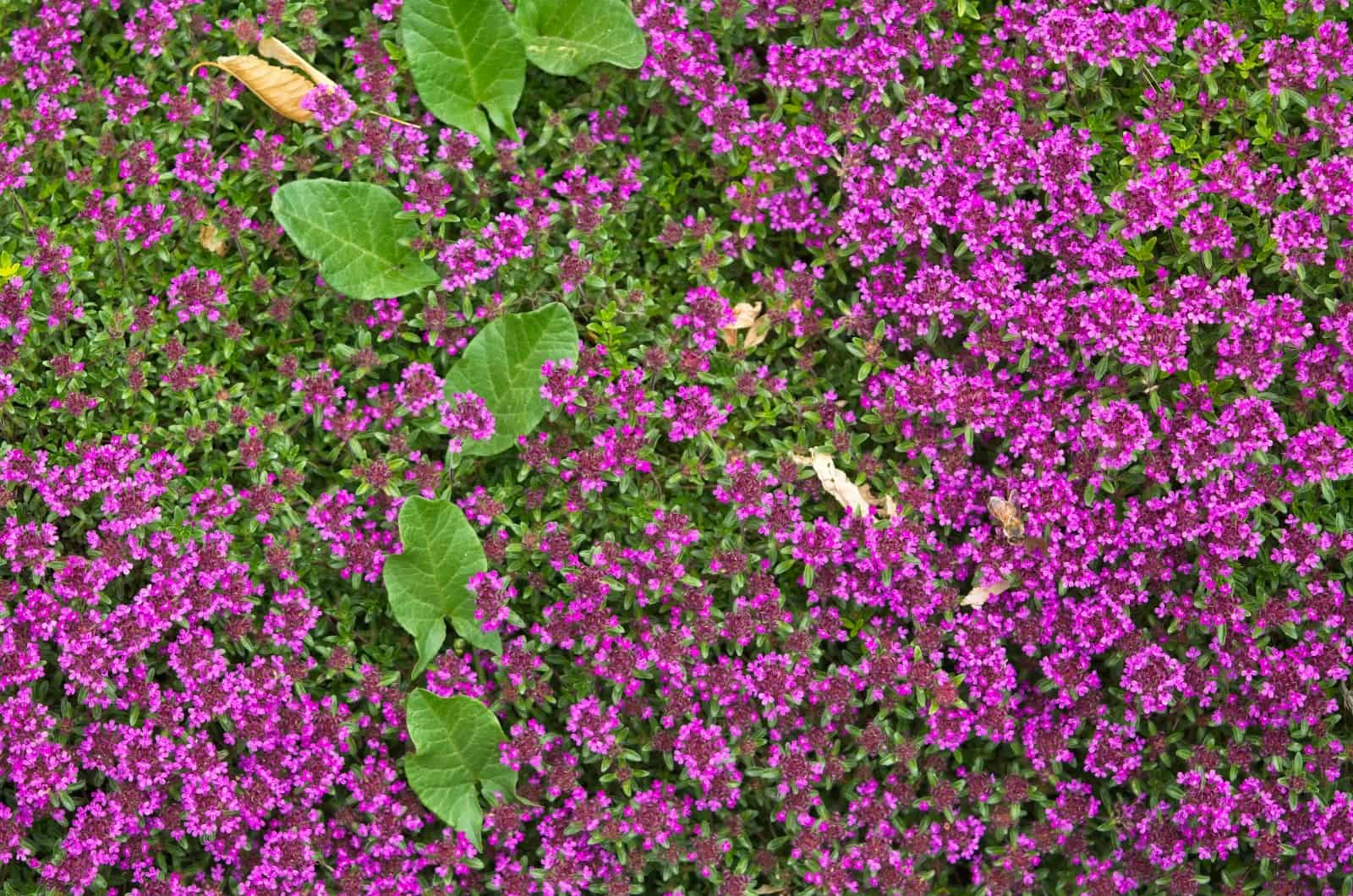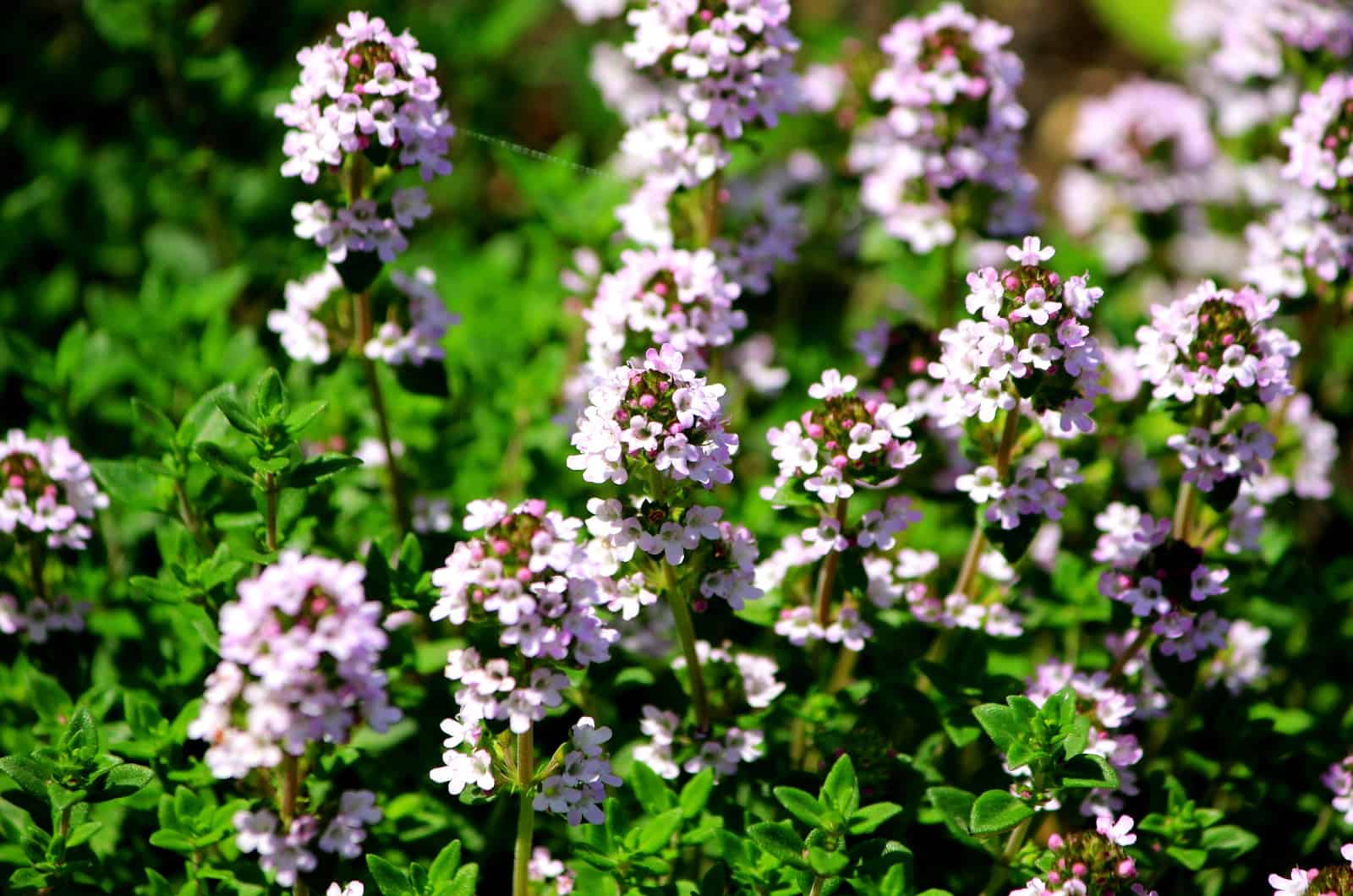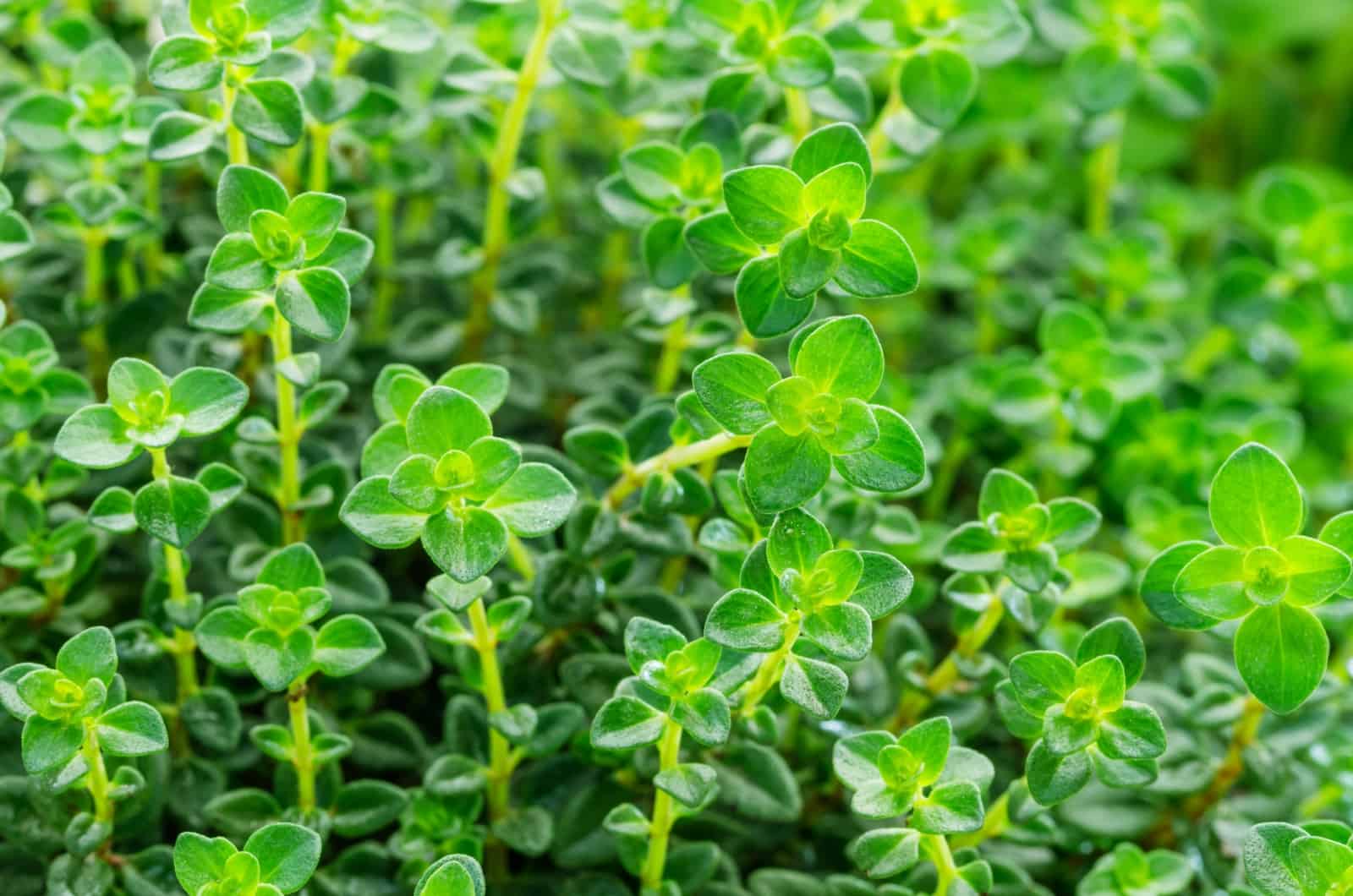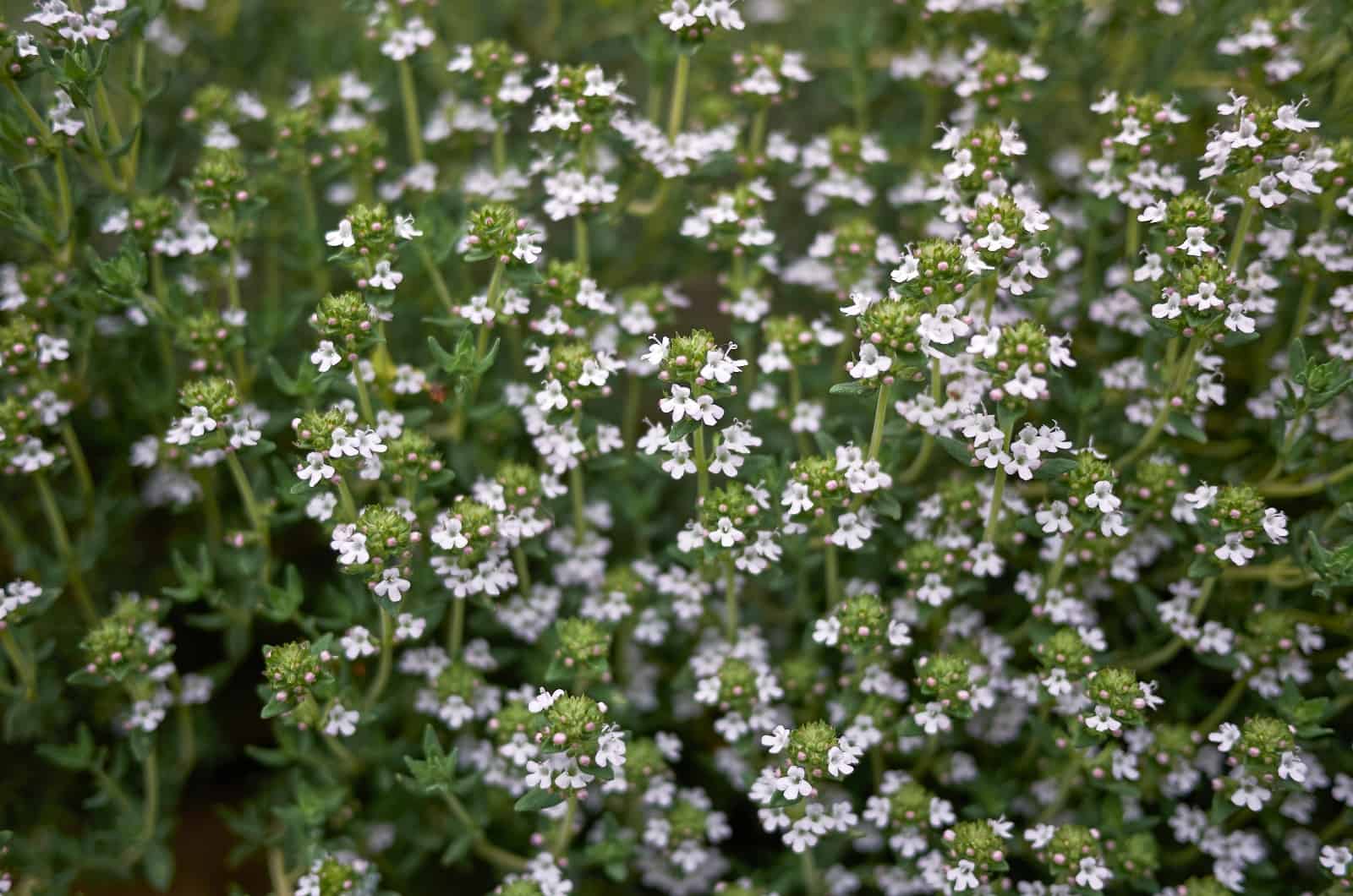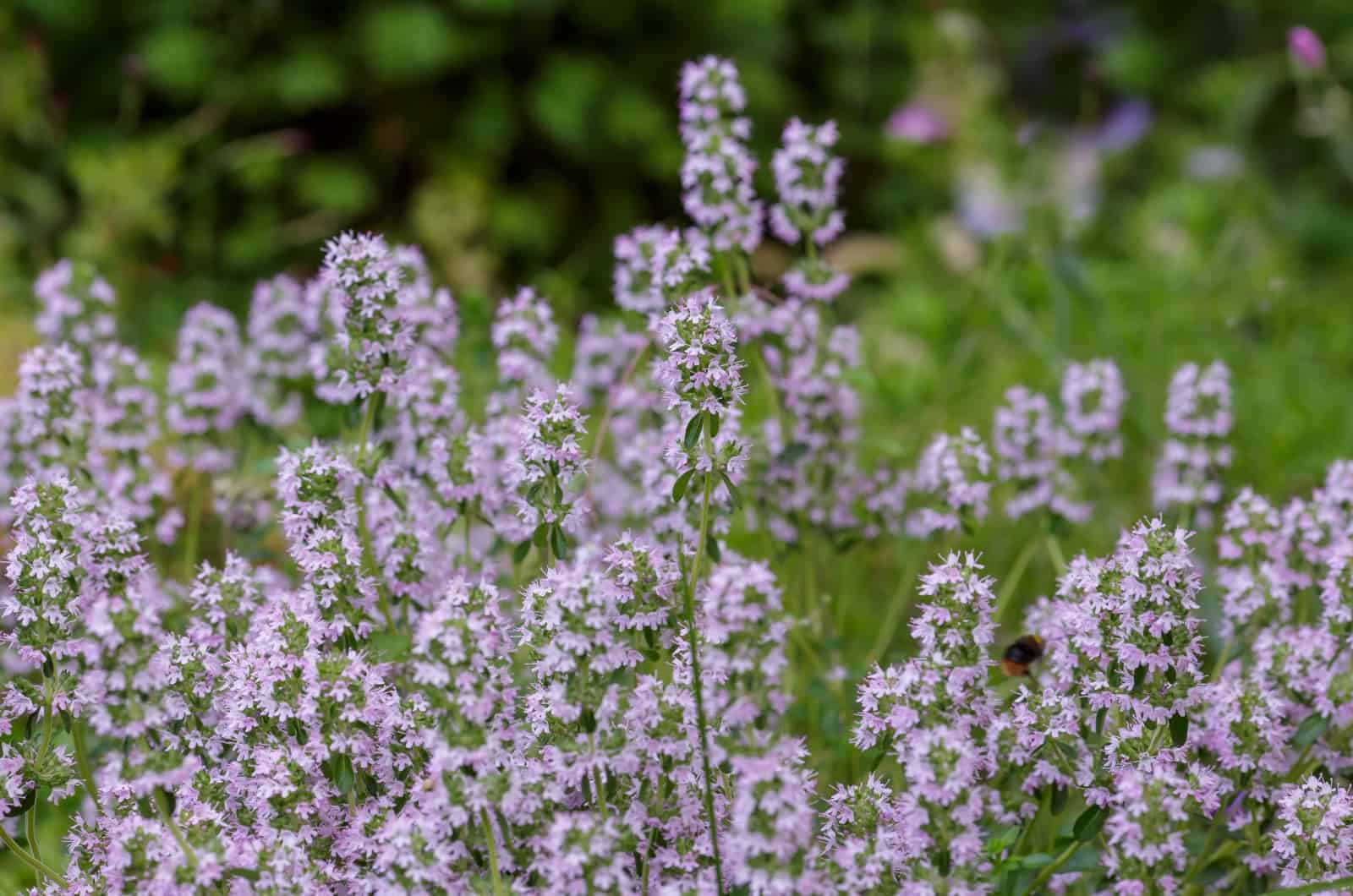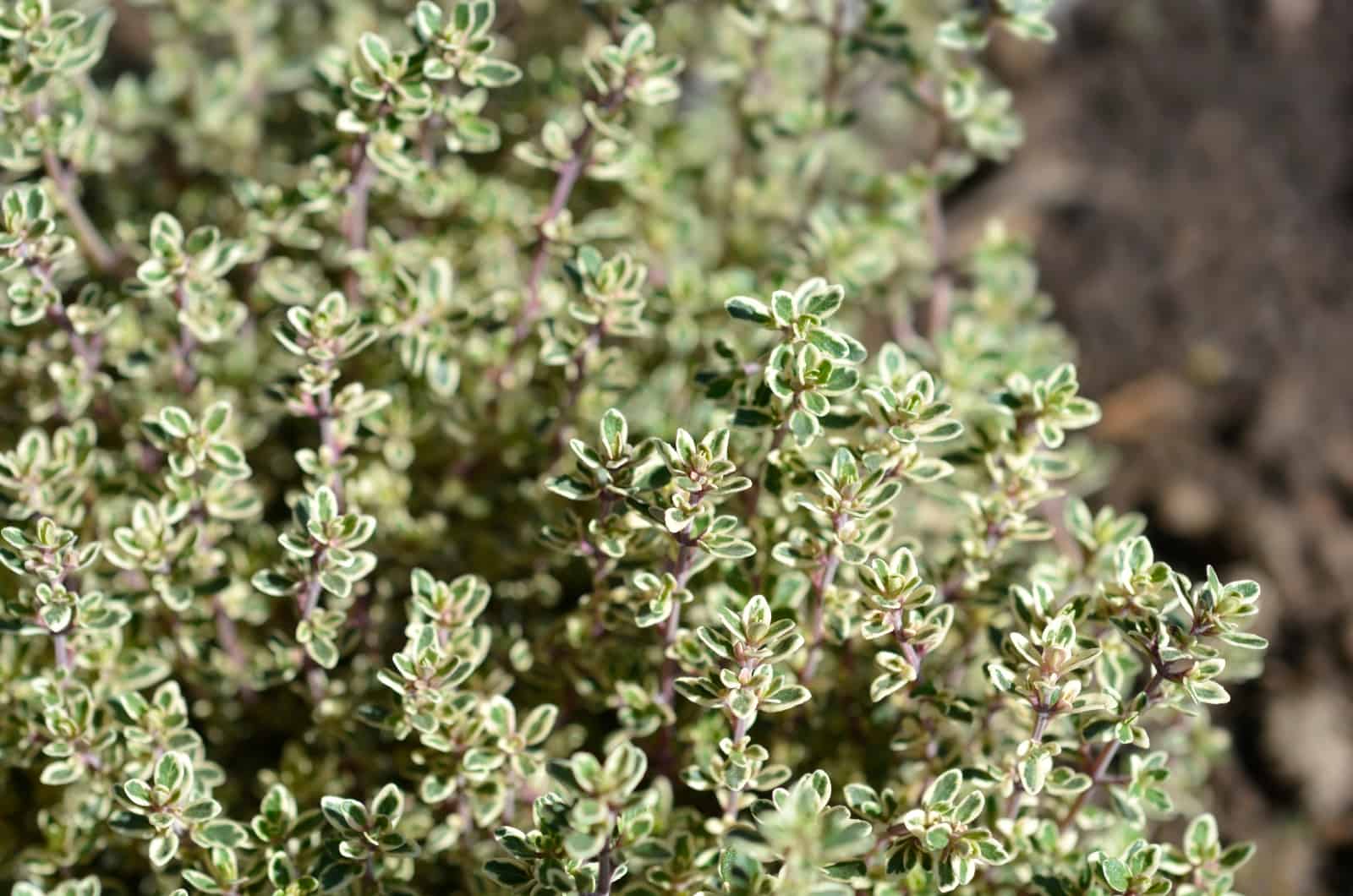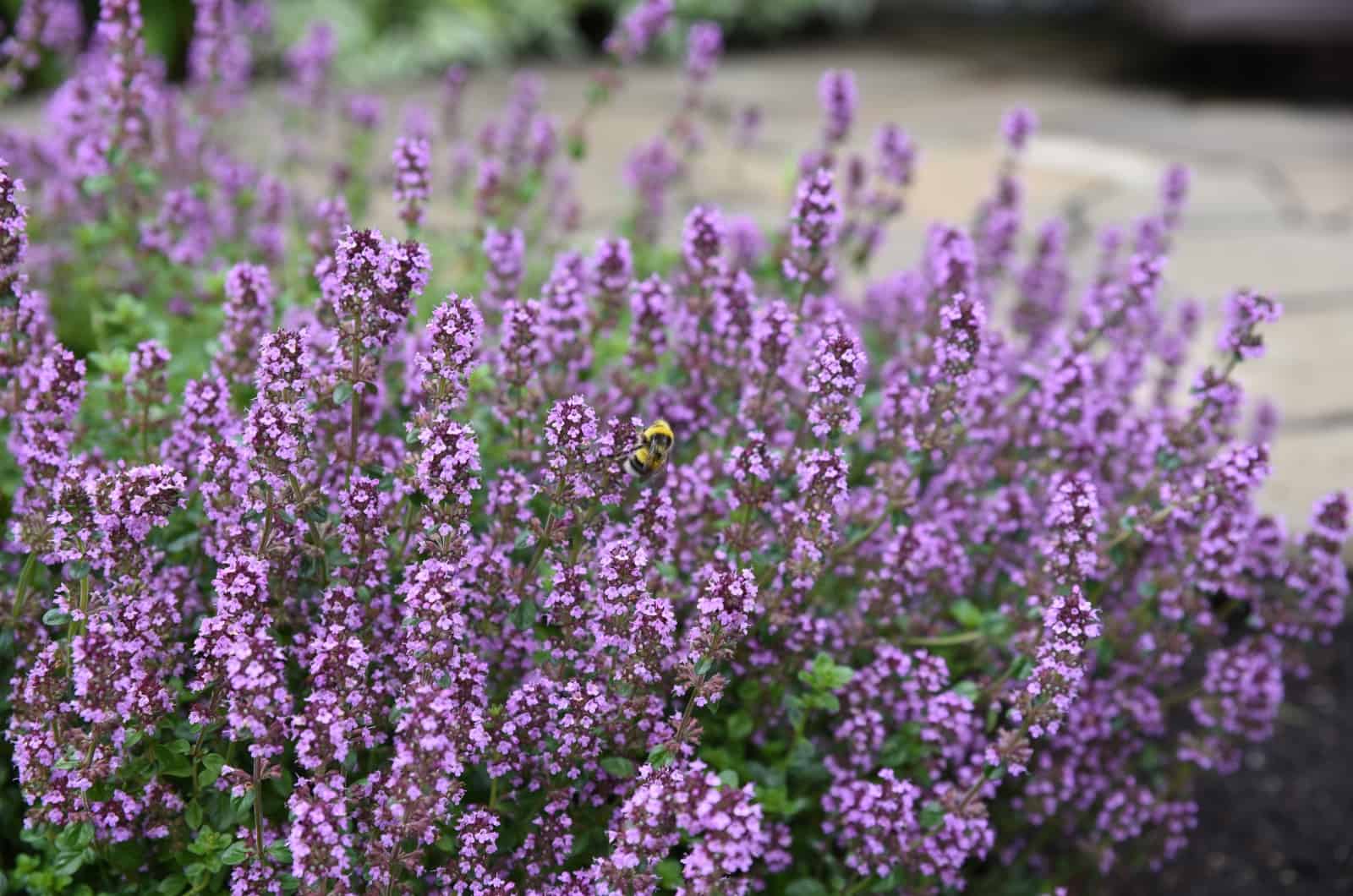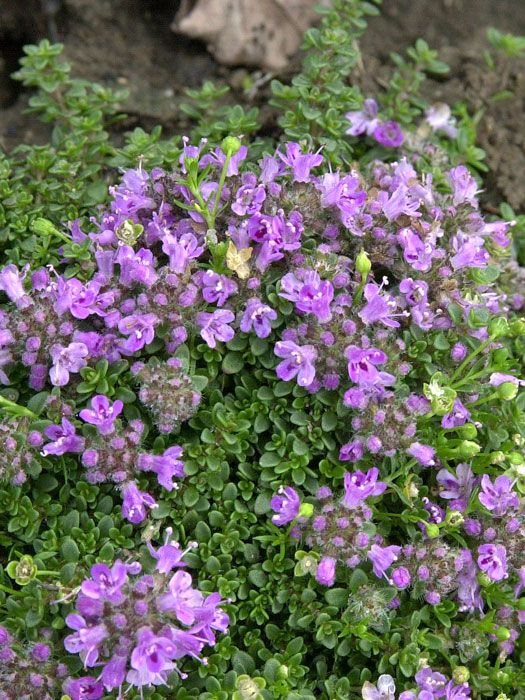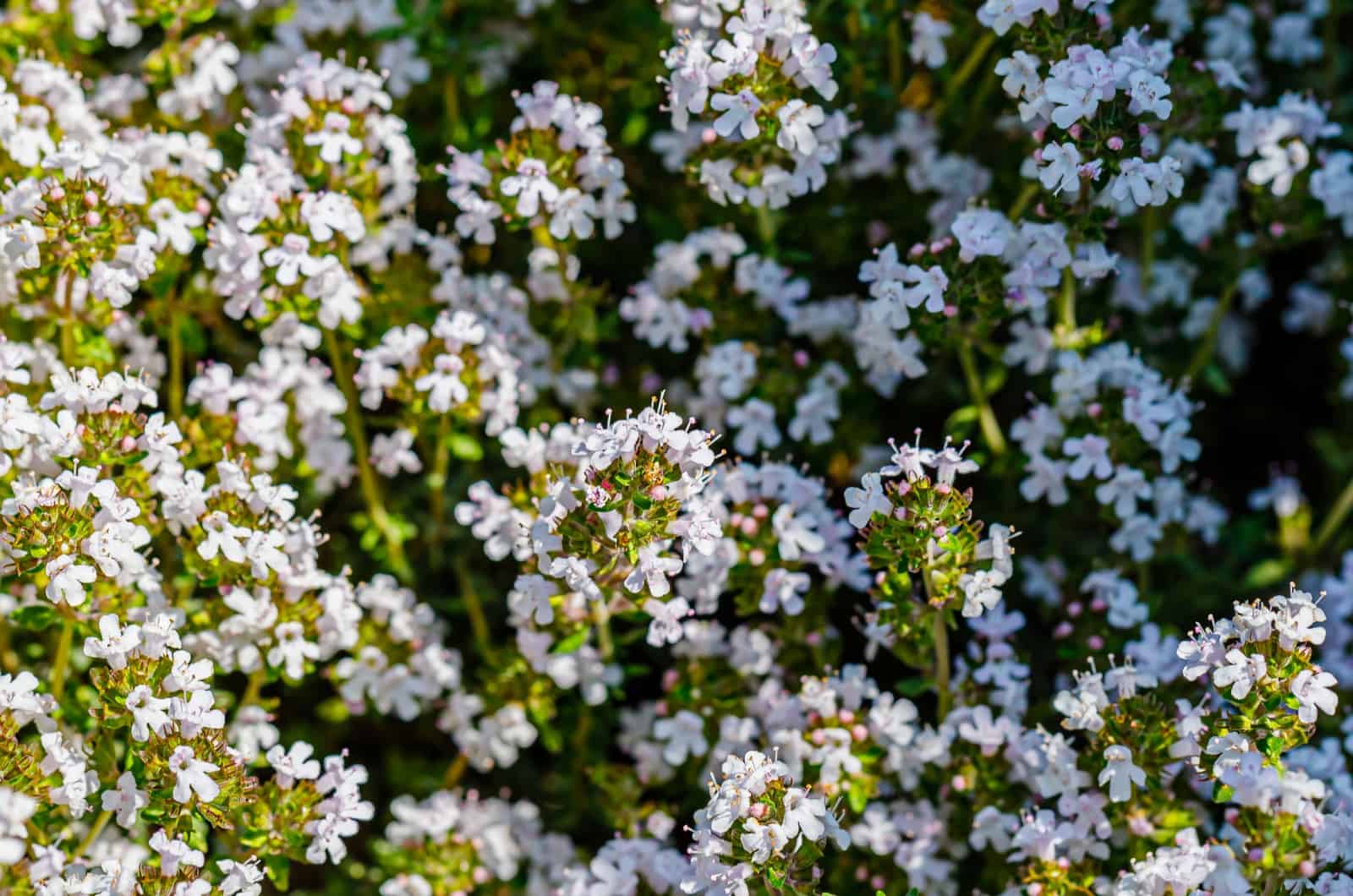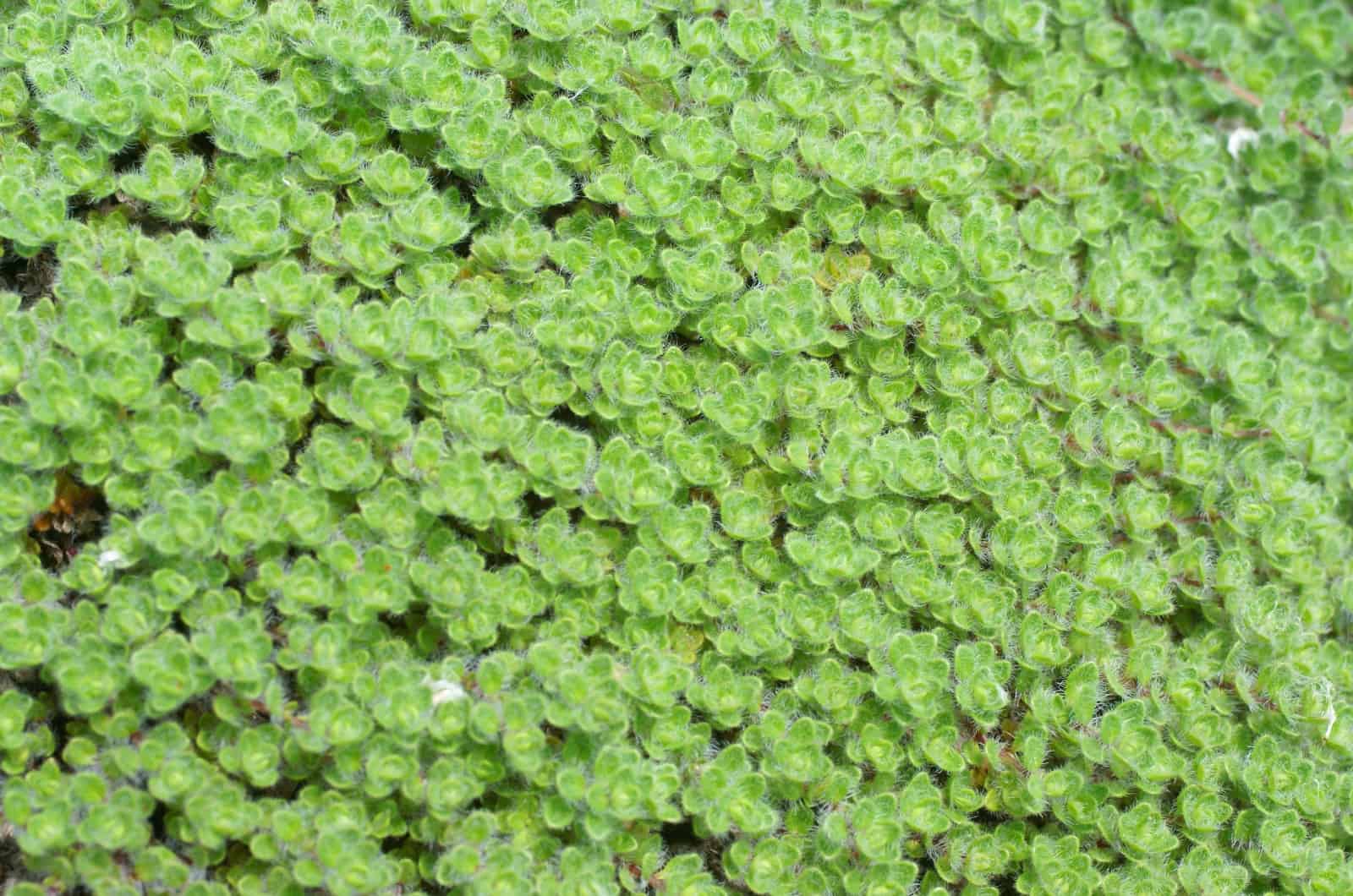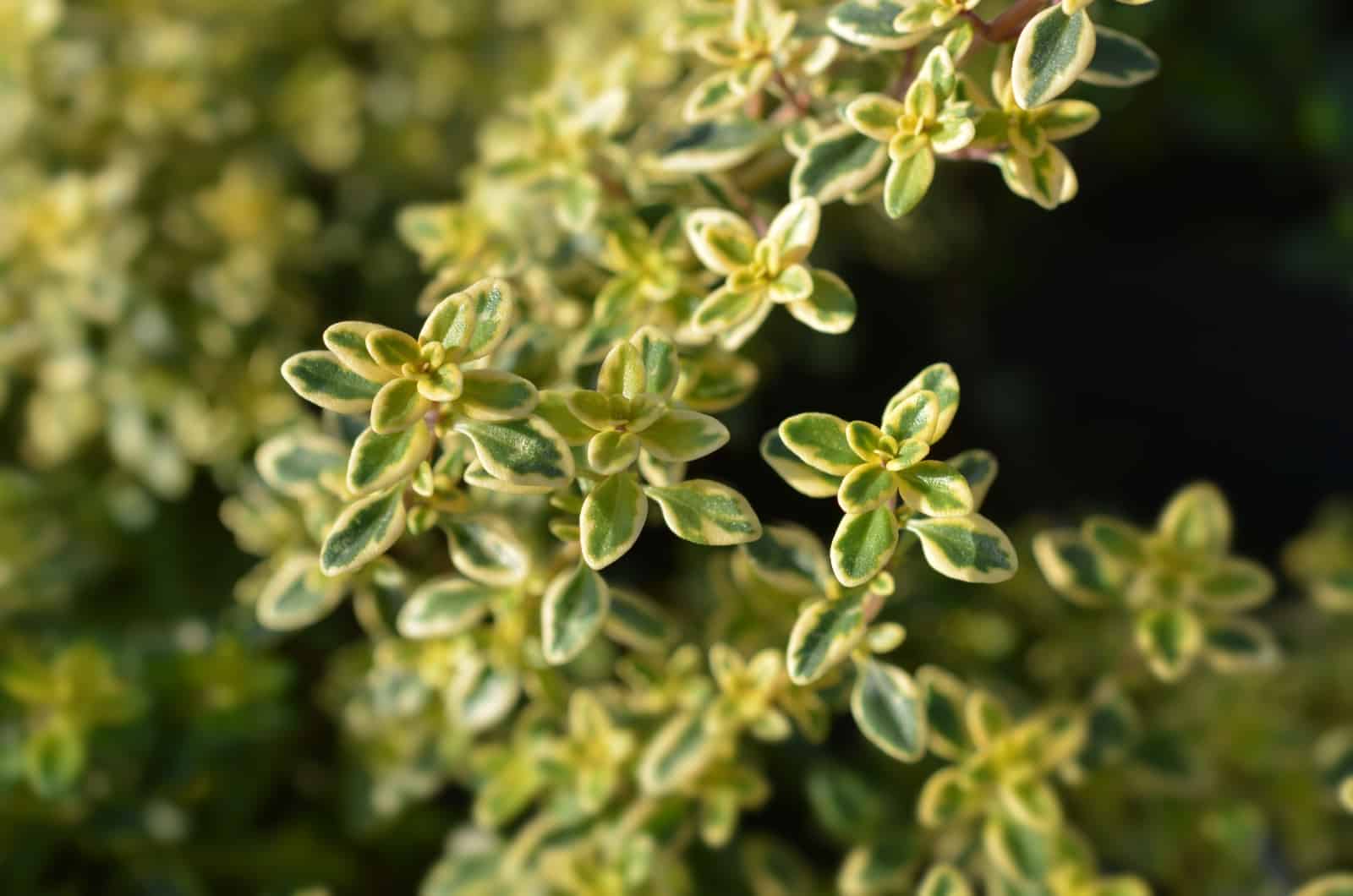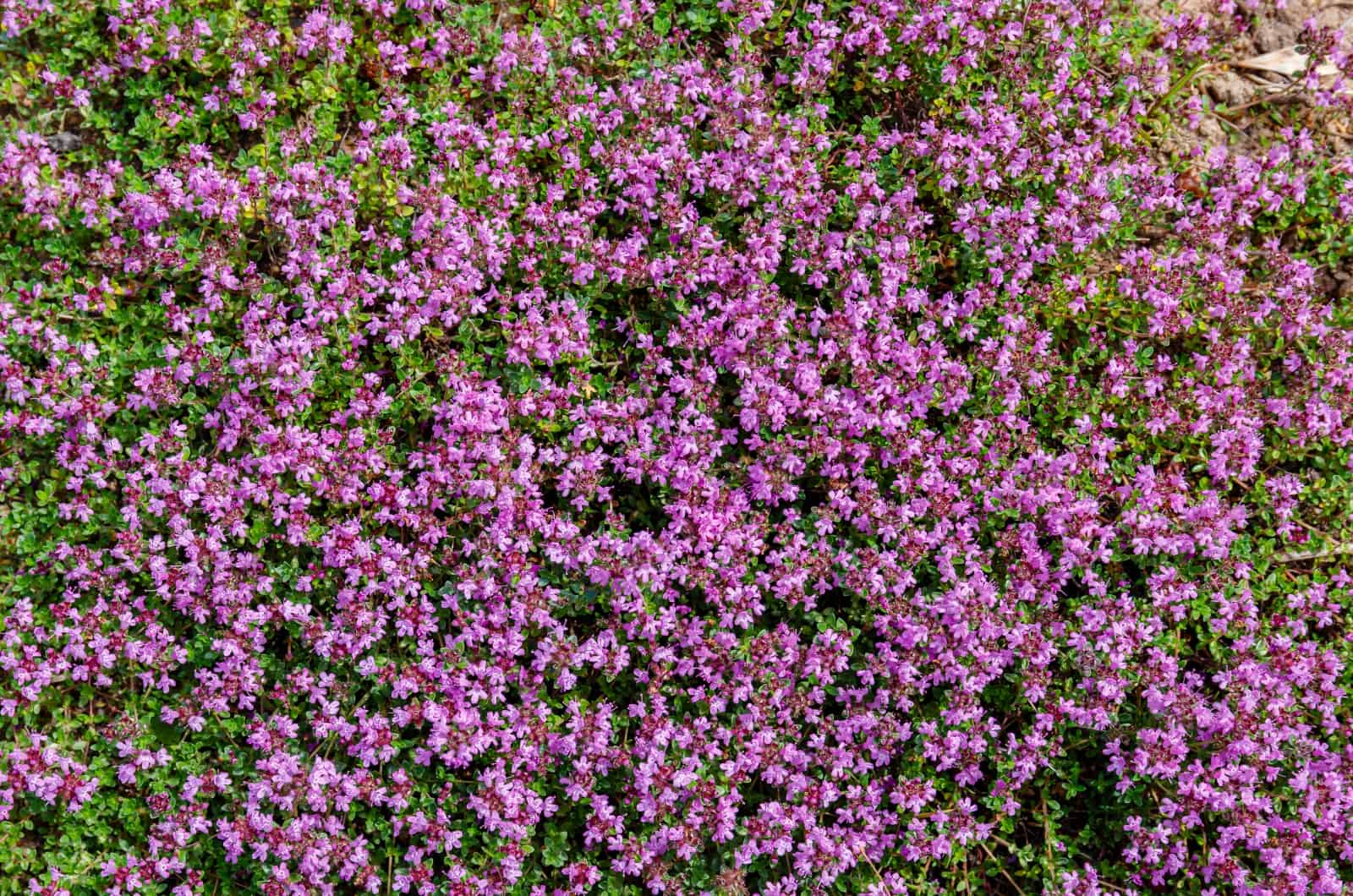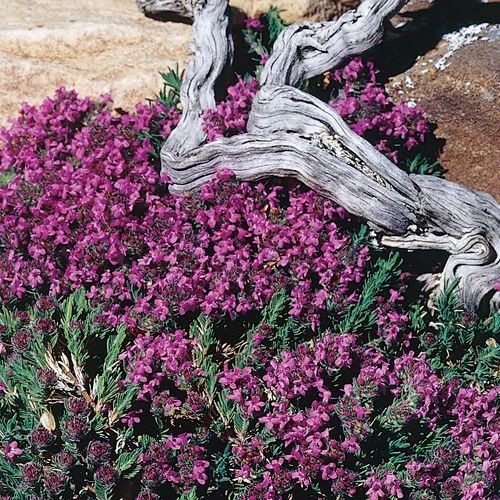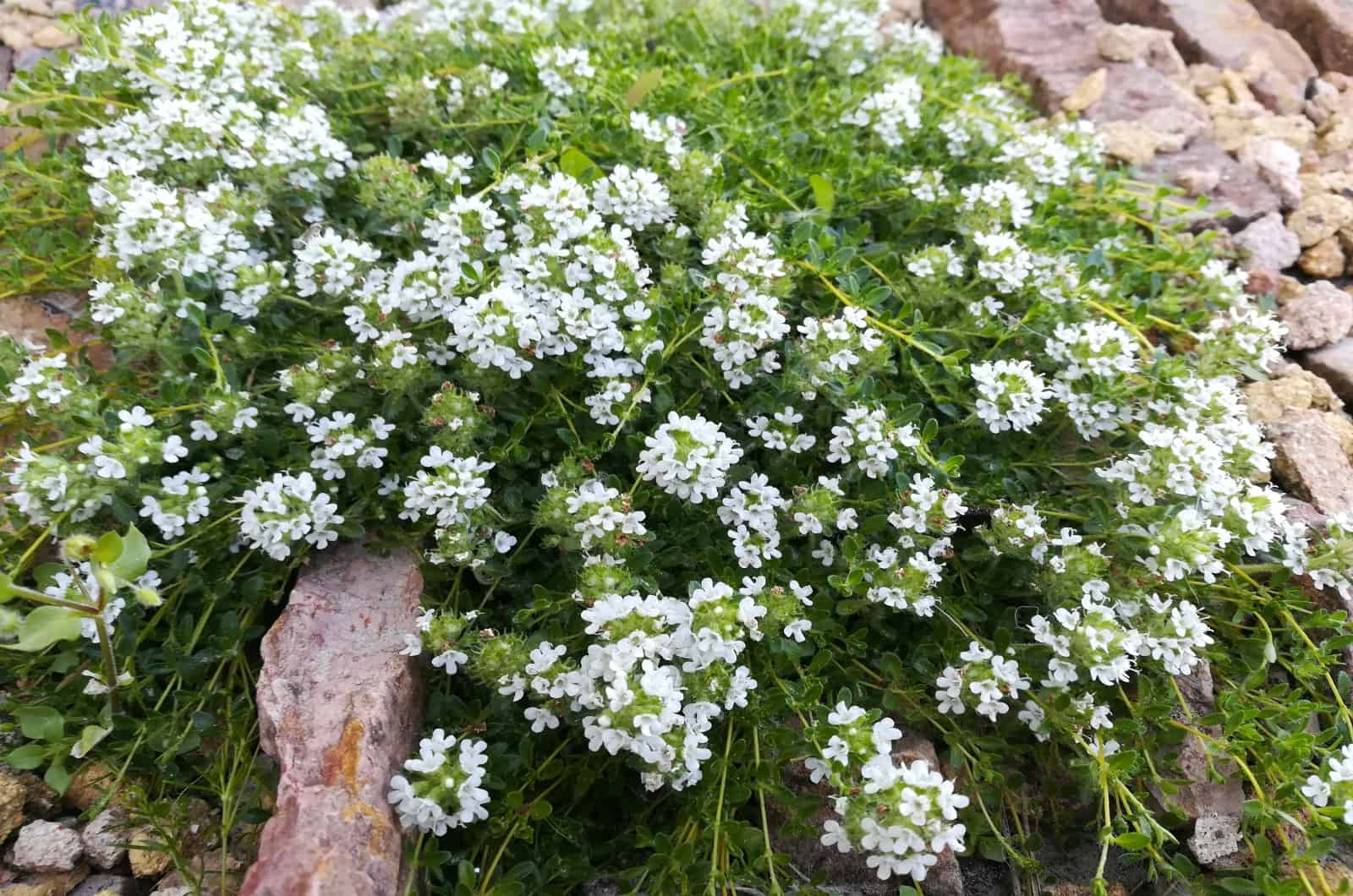If you are looking for a plant that can grow as a ground cover to spruce up your garden, and at the same time be used to make delicious meals, then you should definitely consider growing thyme.
Thyme is a herbaceous perennial plant that belongs to the Lamiaceae family. There are over 300 thyme varieties that all have unique fragrances, flavors, and appearances. I’m sure that everyone can find the one that suits their style and needs!
What’s also great about thyme is that it is relatively easy to grow – you won’t have to worry much about soil conditions or watering because these plants can grow basically anywhere.
So, let’s meet some different types of thyme that can really spruce up your garden!
15 Types Of Thyme
First of all, you shouldn’t pick a specific thyme cultivar simply based on aesthetics – you have to take into account the USDA hardiness zones in which thyme can thrive (unless you are growing herbs in pots indoors). These herbs usually grow best in zones 5 through 9.
Most of them don’t like hot and humid summers or overly wet conditions. These plants absolutely love full sun, though they can tolerate part shade. When it comes to the soil conditions, they only need well-draining soil.
They don’t even need to be fertilized!
However, you should be careful as some types tend to become invasive, such as creeping thyme. Don’t worry, creeping thyme won’t harm your other plants.
Now, let’s go through some of the prettiest and tastiest types of thyme!
1. French Thyme
Also known as Summer thyme or T. vulgaris narrow-leaf French, this is a type of thyme primarily grown for culinary purposes. It’s because this thyme has a mild and sweet flavor that is just perfect for a variety of meals.
French thyme grows best in USDA hardiness zone 6. However, it’s quite often grown as an annual plant.
The plant is compact and grows up to 12 inches tall. This is a popular choice because it is easily cultivated indoors.
2. Lemon Thyme
Lemon thyme (Lemon x citriodus) is a small plant suitable for growing in rock gardens, herb gardens, as a ground cover, and also in pots and containers. This thyme is not called lemon for no reason – its fragrance and taste is reminiscent of refreshing lemons!
This is why this thyme is perfect for cooking and adding to salads or smoothies. However, its tiny leaves look absolutely adorable, which is why this variety is often grown for ornamental purposes. Not only is your garden going to look amazing, but it will also have a fresh citrusy smell!
It also produces tiny pink flowers that can attract pollinators and beneficial insects to your garden, and even keep deer at bay!
Another great thing about this variety is that it can grow in most hardiness zones. It grows between 6 to 12 inches tall, and it requires full sun to grow and thrive.
3. Common Thyme
Thymus vulgaris, otherwise known as Common thyme and English thyme, is a low-growing shrub with flat, angular, fragrant green leaves. Although this thyme is primarily used for culinary purposes, it is also a great addition to gardens because it produces beautiful purple flowers.
It thrives in USDA hardiness zones 3 through 8 and spreads rather quickly. This is why it can be used to decorate rock gardens and gaps in patios. Common thyme usually grows 8 to 12 inches tall.
Due to its strong aroma, Common thyme is often added to various dishes, stews, and soups, and is also used to make essential oils. Its flavor is sweeter than sage and more spicy than oregano.
There are numerous health benefits that come from adding Common thyme to your diet. For instance, thyme can boost immunity, prevent bacterial infections, help with acne, and lower blood pressure.
4. Lavender Thyme
Lavender thyme is a bit different than the varieties we’ve looked at so far. While most thyme species have small, flat, green leaves, Lavender thyme produces needle-like leaves with a light green color.
Lavender thyme, also known as Thymus vulgaris thracicus, is a hardy perennial plant that has a strong scent of lavender (hence the name). If you don’t want to grow lavender, but you like its fragrance, then grow Lavender thyme instead!
It spreads quickly and can be used as a ground cover. However, although it grows only 3 inches tall, I wouldn’t recommend growing it as a ground cover because the plant is not completely flat. It is more suitable for rock gardens.
Lavender thyme produces beautiful purple flowers that start blooming in May – these flowers look absolutely stunning when the thyme is grown in a hanging basket.
This variety is not used for cooking.
5. Silver Queen Thyme
Silver queen thyme is actually a variety of Lemon thyme. Its scientific name is Lemon x citriodus v. “Silver queen”. It has green variegated leaves with silvery margins that combine perfectly with the crimson red stems.
This variety grows from 3 to 12 inches tall, and it produces beautiful pink flowers. Due to its bushy appearance, it is commonly grown in containers and hanging baskets. However, this variety is not used solely to make your garden look nicer – you can also use it to make delicious teas or meals!
Silver queen thyme thrives in USDA hardiness zones 5 to 8. All it needs is some sunshine and drought to grow!
6. Creeping Thyme
Creeping thyme, as the name suggests, is a creeping variety often grown as a ground cover, though it looks lovely in rock gardens, walkways, or as a border. This plant produces lovely multicolored flowers. Creeping thyme is often confused with creeping phlox, but these are separate species.
Although some types also produce white blooms, they often have purple or pink blossoms. These flowers truly stand out among the dark green leaves. You will find thyme on the list of blueberry companion plants because it attracts a lot of pollinators and beneficial insects to the garden.
It grows perfectly fine in USDA hardiness zones 4 to 9, and it requires a lot of sunshine and well-draining soil. As well as ornamentally, creeping thyme can also be used for culinary purposes.
Be careful because creeping thyme can get invasive in certain areas!
7. Minus Thyme
T. praecox “Minus”, or simply Minus thyme, is a dwarf variety of thyme which only grows to about 6 inches tall. This is why it is often called miniature thyme.
Minus thyme has flat, rounded, hairy green leaves that grow densely on wooden stems. Its leaves are probably the smallest among all thyme varieties. In addition to tiny leaves, this herb also produces small, light pink flowers.
Even though they are small, these flowers can still attract pollinators!
It is rarely used for culinary purposes, but it’s a great ground cover because of its small size. Be careful with watering as they prefer to grow in dry conditions and are easily overwatered.
8. Orangelo Thyme
Similarly to Lemon thyme, Orangelo thyme (Thymus fragrantissimus) also has a citrusy aroma, hence the name. Orangelo thyme has narrow green leaves that grow on a green stem. The flowers are pinkish-white, and they are great for attracting pollinators. Orangelo thyme grows about 8 to 12 inches tall.
This is a hardy herb that can grow in poor soil. It just requires a lot of sunshine and warm temperatures.
It can also be used for culinary purposes. I would suggest that you harvest the leaves immediately before they bloom for a better taste. Due to its citrusy flavor, it is often added to jams.
Here is a recipe for delicious Orangelo thyme jam: https://minimalistbaker.com/orange-thyme-jam/
9. Conehead Thyme
Conehead thyme is one of my favorite types of thyme. It can basically grow wherever you put it. I grow mine in a pot outdoors, and it just keeps growing and growing!
Conehead thyme, also called Cordiothymus capitatus, is a lovely thyme variety that produces needle-like, green leaves. This variety also has pretty purple flowers that grow quite densely.
Trust me, you wouldn’t be the only one that thinks those flowers are pretty – pollinators such as bees and butterflies will immediately be attracted to them. In addition to being a great companion plant, Conehead thyme can also be used in cooking.
The spicy flowers are often added to salads, salsas, or other sauces to spice things up!
It grows in USDA zones 8 to 11 and reaches about 1 to 2 feet tall.
10. Wooly Thyme
The silver-green, spiral-shaped leaves and light pink blossoms of the Wooly thyme cultivar make this variety unique. Wooly thyme, otherwise known as Thymus pseudolanguinosus, is a drought-tolerant variety that does well in USDA hardiness zones 5 to 9.
This is also a creeping variety that is perfect for filling out spaces between pavers or stepping stones, and it can be grown as a ground cover as well.
It blooms rarely, which is why it is ideal if you don’t want insects flying around your yard or garden.
11. Archer’s Gold
The low-growing, mat-forming Thymus citriodorus ‘Archer’s Gold’ has a lemon scent and blooms in the summer with pink flowers and yellow-green foliage. This is a Lemon thyme variety.
This plant is commonly used for culinary purposes, though its pretty flowers and leaves make it very appealing. It goes really well with chicken and fish, although you can add it to salads or smoothies as well. I often add it to my drinks!
This tall thyme plant with pink flowers is a cultivar with leaves that can grow up to six inches in height.
12. Creeping Red Thyme
Red creeping thyme, also known as Thymus serpyllum ‘Coccineus, is one of the prettiest types of creepers because it produces gorgeous magenta flowers. This cultivar quickly spreads out and reaches 18 inches in diameter.
It grows quite flat and immediately disperses. It is widely renowned for growing well in rocky soil, and may thrive anywhere in creeping thyme’s natural habitat.
This low-maintenance plant is beginner- and pet-friendly. If you don’t have much experience with growing herbs, I would suggest you start with thyme. It thrives in USDA zones 4 through 9 and it loves direct sunlight exposure!
Creeping red thyme is edible and has a flavor and scent similar to mint. Leaves are harvested and dried.
13. Juniper Thyme
Thymus leuchotrichus, aka Moonlight thyme or Juniper thyme, is a low-growing shrub that grows 6 inches tall. It is known for its vigorous flower production. The flowers are small and they usually have a pink color.
What makes this thyme interesting are its stiff, needle-like, silver leaves (which is how it got the name “Moonlight thyme”). These look absolutely amazing in a rock garden, especially with the pink flowers as a subtle pop of color!
However, Juniper thyme is also one of the culinary thyme varieties. They also have a spicy flavor.
Juniper thrives in USDA zones 5 to 11, and like all the other types of thyme, it requires full sunlight exposure.
14. Pink Chintz
Pink chintz thyme is a small, creeping plant that blooms in the middle of spring with salmon-pink flowers on thick stems of wooly green foliage. It is a species of the genus Thymus Serpyllum and it blooms annually. It spreads relatively quickly, reaching up to 24 inches in diameter.
It doesn’t need much watering, but it needs (you guessed it) direct sunlight exposure!
Pink chintz grows well in USDA zones 4 to 9, and is ideal for mass planting, attracts pollinators, and is resistant to deer. It is also edible, so the lovely pink flowers can be used as garnish.
15. White Creeping Thyme
We are going to finish off our list with a rare variety called White creeping thyme, aka Thymus paocos “Albiflorus”. Unlike other varieties, this thyme has fragrant white blossoms and a carpet-like texture. The majority of these plants rise one to two inches above the ground.
It is more tolerant and hardy than other varieties, and it can also grow in USDA zone 2. Still, this thyme loves the sun and doesn’t need much watering.
Wrapping Up
That’s our list of the best types of thyme!
Still, we only mentioned 15 varieties of thyme, and there are over 300 species that you can look into.
I suggest everyone grows this herb because there are so many benefits to it. Not only are you going to end up with a beautiful garden or yard, but you will also have delicious herbs that you can add to your meals!
Your garden is going to smell amazing and be filled with pollinators that are necessary for fruit production.
Until next thyme!

